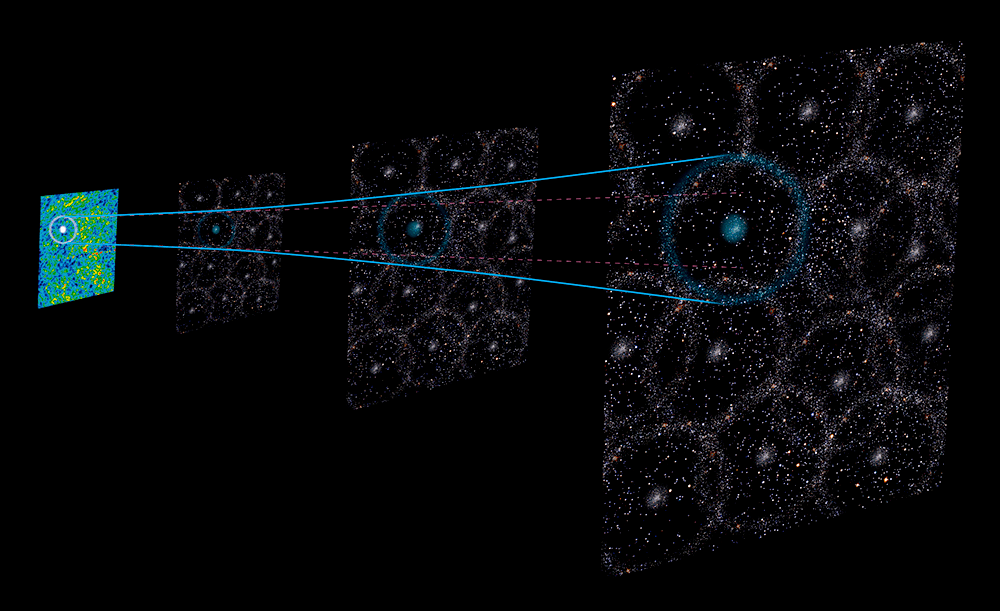Science
New Study on Supernova Measurements Could Resolve Hubble Tension

Recent research suggests that a reevaluation of supernova measurements may help resolve the longstanding discrepancy known as the Hubble tension. This tension arises from conflicting measurements of the expansion rate of the Universe, which have puzzled astronomers for years. The new findings indicate that incorporating the ages of host galaxies can align supernova measurements more closely with other methods, potentially resolving the discrepancies.
The Hubble tension refers to the differences in the calculated values of the Hubble constant (H0) obtained through various observational methods. Historically, Edwin Hubble’s discovery in 1929 of a linear relationship between the redshift of galaxies and their distance led to the formulation of the Hubble constant, which quantifies the rate of cosmic expansion. Over the decades, measurements have consistently varied, with supernova observations suggesting a rate of approximately 71 to 75 (km/s)/Mpc, while the cosmic microwave background (CMB) and Baryon Acoustic Oscillation (BAO) measurements indicate values closer to 67 to 69 (km/s)/Mpc.
The research team, led by Junhyuk Son and published in the Monthly Notices of the Royal Astronomical Society, has focused on the correlation between the ages of galaxies and their associated supernovae. By accounting for the age of host galaxies, the new analysis shows a promising trend where supernova measurements align more closely with those derived from CMB and BAO data. This adjustment suggests that the perceived discrepancies in Hubble measurements might stem from an oversight in considering host galaxy age.
The study does not provide a comprehensive survey, but preliminary results indicate that using host galaxies of a similar age yields better alignment among the three measurement methods. The authors caution that the findings are still tentative, as only about 300 distant galaxies have both supernova observations and age-determining spectra. The limited sample size necessitates further investigation.
Looking ahead, the upcoming launch of the Rubin Observatory later in 2025 is expected to enhance the understanding of galaxy ages significantly. This advancement could lead to a more definitive resolution of the Hubble tension and possibly challenge the current cosmological model, which relies heavily on the cosmological constant as a singular explanation for dark energy.
Should this new approach hold under scrutiny, it may necessitate a reevaluation of the ΛCDM model, commonly accepted in cosmology, which integrates dark energy and matter into our understanding of the Universe. Future explorations will likely address the implications of these findings and what they mean for the broader field of cosmology.
As researchers continue to explore the intricacies of cosmic expansion, the potential to redefine fundamental aspects of our Universe remains an exciting prospect. The interplay of dark energy, matter, and the mechanisms of cosmic expansion could redefine our understanding of the cosmos, making this a pivotal moment in astronomical research.
-

 Top Stories3 weeks ago
Top Stories3 weeks agoMarc Buoniconti’s Legacy: 40 Years Later, Lives Transformed
-

 Health3 weeks ago
Health3 weeks agoInnovative Surgery Restores Confidence for Breast Cancer Patients
-

 Sports4 weeks ago
Sports4 weeks agoSteve Kerr Supports Jonathan Kuminga After Ejection in Preseason Game
-

 Top Stories3 weeks ago
Top Stories3 weeks agoBOYNEXTDOOR’s Jaehyun Faces Backlash Amid BTS-TWICE Controversy
-

 Business2 weeks ago
Business2 weeks agoForeign Inflows into Japan Stocks Surge to ¥1.34 Trillion
-

 Science4 weeks ago
Science4 weeks agoChicago’s Viral ‘Rat Hole’ Likely Created by Squirrel, Study Reveals
-

 Entertainment4 weeks ago
Entertainment4 weeks agoZoe Saldana Advocates for James Cameron’s Avatar Documentary
-

 Lifestyle4 weeks ago
Lifestyle4 weeks agoKelsea Ballerini Launches ‘Burn the Baggage’ Candle with Ranger Station
-

 Politics4 weeks ago
Politics4 weeks agoDallin H. Oaks Assumes Leadership of Latter-day Saints Church
-

 Science2 weeks ago
Science2 weeks agoUniversity of Hawaiʻi Joins $25.6M AI Project to Monitor Disasters
-

 Business4 weeks ago
Business4 weeks agoTyler Technologies Set to Reveal Q3 2025 Earnings on October 22
-

 Health3 weeks ago
Health3 weeks ago13-Year-Old Hospitalized After Swallowing 100 Magnets









